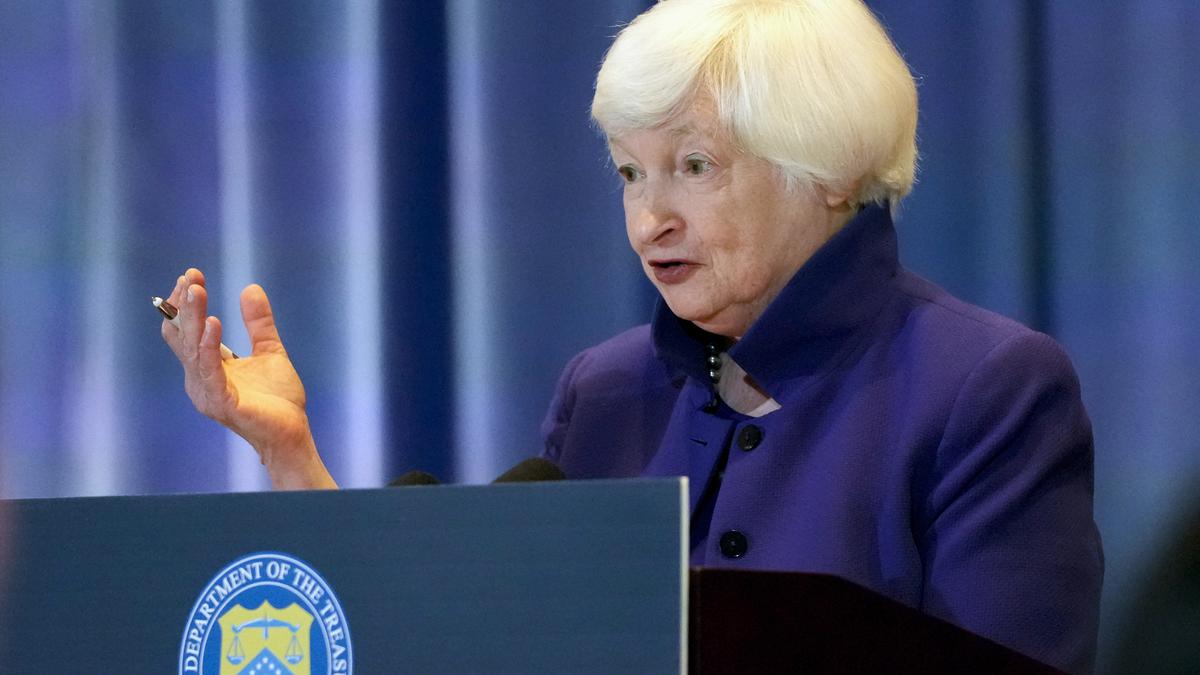Illustration for The Hiindu
The story so far: The Reserve Bank of India (RBI) earlier this month asked gold loan lenders to stick to regulatory norms while lending in a bid to tighten its grip over Non-Banking Financial Companies (NBFCs). The RBI has increased its scrutiny of NBFCs after it found certain NBFCs to be flouting regulatory norms. In March, the RBI banned IIFL Finance from issuing fresh gold loans after the firm was found violating lending norms.
What are the RBI’s gold loan norms?
The RBI stipulates lenders to comply with certain norms while lending money in lieu of gold. For instance, lenders are not allowed to lend any amount of money that is greater than 75% of the value of the gold that is submitted as collateral by the borrower. This is to ensure that banks have sufficient cushion to absorb any losses by selling the gold in case the borrower defaults on the loan.
Also read: Ensure gold loans are repaid and not renewed, banks tell branches
And in order to comply with income tax rules, the RBI also mandates that when a loan is disbursed to a borrower, no more than ₹20,000 can be disbursed in the form of cash; the remaining loan amount needs to be deposited in the borrower’s bank account. It also instructs lenders to conduct the auction of any gold (in case a borrower defaults) in a fair and transparent manner in locations that are accessible to the borrowers.
It is believed that the RBI is working on detailed guidelines for gold loans that lenders will have to follow.
Why does the RBI want to reinforce these norms now?
The RBI says it has found some NBFCs to be violating regulations linked to gold-based lending. IIFL Finance was disciplined in March for violating norms related to the size and form of loan disbursals, the evaluation and assaying of gold, the levying of charges, and irregularities in the auction process. For instance, the RBI found that there were loan-to-value irregularities in over two-thirds of defaulted accounts in the case of IIFL Finance.
It should be noted that NBFCs may want to increase the size of their loan book at an aggressive pace in an attempt to grow their business, and thus may be willing to offer loans of value that exceed 75% of the value of the underlying collateral. To do this, NBFCs may try to deliberately overestimate the value of the gold that the borrowers submit as collateral. It is thus not surprising that the RBI has raised concerns about the way in which gold is assayed and valued by NBFCs.
Lenders such as IIFL Finance were using internal assayers to evaluate the value and the purity of the gold offered as collateral by borrowers. This is in contrast to gold loans extended by banks wherein external assayers determine the value and purity of the gold. It should be noted that the gold loan portfolio of NBFCs has increased at an aggressive pace since the pandemic, growing over four fold from about ₹35,000 crore at the end of financial year 2020 to about ₹1,31,000 crore by the end of FY 2023.

The RBI may fear that such aggressive lending by NBFCs is happening in widespread violation of lending norms and that this could potentially cause systemic trouble in the future as the gold loan industry grows in size rapidly.
How will the RBI’s scrutiny affect NBFCs?
The NBFCs expect the RBI’s scrutiny of their lending practices to affect their growth and profitability. The RBI’s insistence that no more than ₹20,000 shall be disbursed as cash when a loan is approved, for instance, is expected to make NBFC gold loans less attractive.
The NBFCs have taken pride in offering emergency cash to borrowers at short notice unlike banks, particularly to those who are not part of the banking system and deal primarily in cash. Many NBFCs might also have to become less aggressive in their lending practices as the RBI enforces the loan-to-value rules more strictly.
It should be noted that the RBI had temporarily allowed lenders to make loans up to 90% of the value of the underlying gold collateral during the pandemic to help borrowers, and this also helped NBFCs expand their loan books aggressively.
Further, measures to make the auction process more transparent and accessible to borrowers could increase the cost of doing business for NBFCs and lead to higher borrowing rates for lenders. The RBI, on the other hand, may believe that its lending norms will make the gold loan business more sustainable and help avoid systemic risks in the long run.



